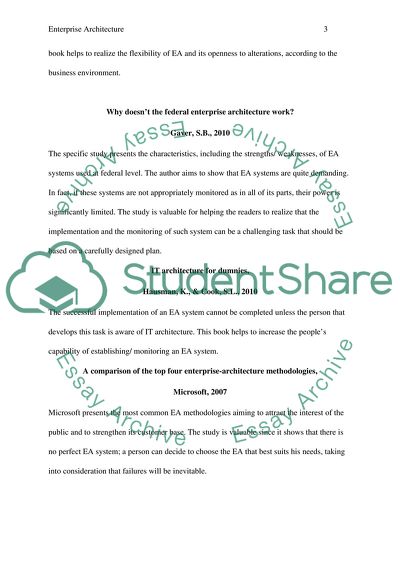Cite this document
(Enterprise Architecture Annotated Bibliography Example | Topics and Well Written Essays - 1750 words, n.d.)
Enterprise Architecture Annotated Bibliography Example | Topics and Well Written Essays - 1750 words. https://studentshare.org/information-technology/1803648-annotated-bibliography
Enterprise Architecture Annotated Bibliography Example | Topics and Well Written Essays - 1750 words. https://studentshare.org/information-technology/1803648-annotated-bibliography
(Enterprise Architecture Annotated Bibliography Example | Topics and Well Written Essays - 1750 Words)
Enterprise Architecture Annotated Bibliography Example | Topics and Well Written Essays - 1750 Words. https://studentshare.org/information-technology/1803648-annotated-bibliography.
Enterprise Architecture Annotated Bibliography Example | Topics and Well Written Essays - 1750 Words. https://studentshare.org/information-technology/1803648-annotated-bibliography.
“Enterprise Architecture Annotated Bibliography Example | Topics and Well Written Essays - 1750 Words”. https://studentshare.org/information-technology/1803648-annotated-bibliography.


